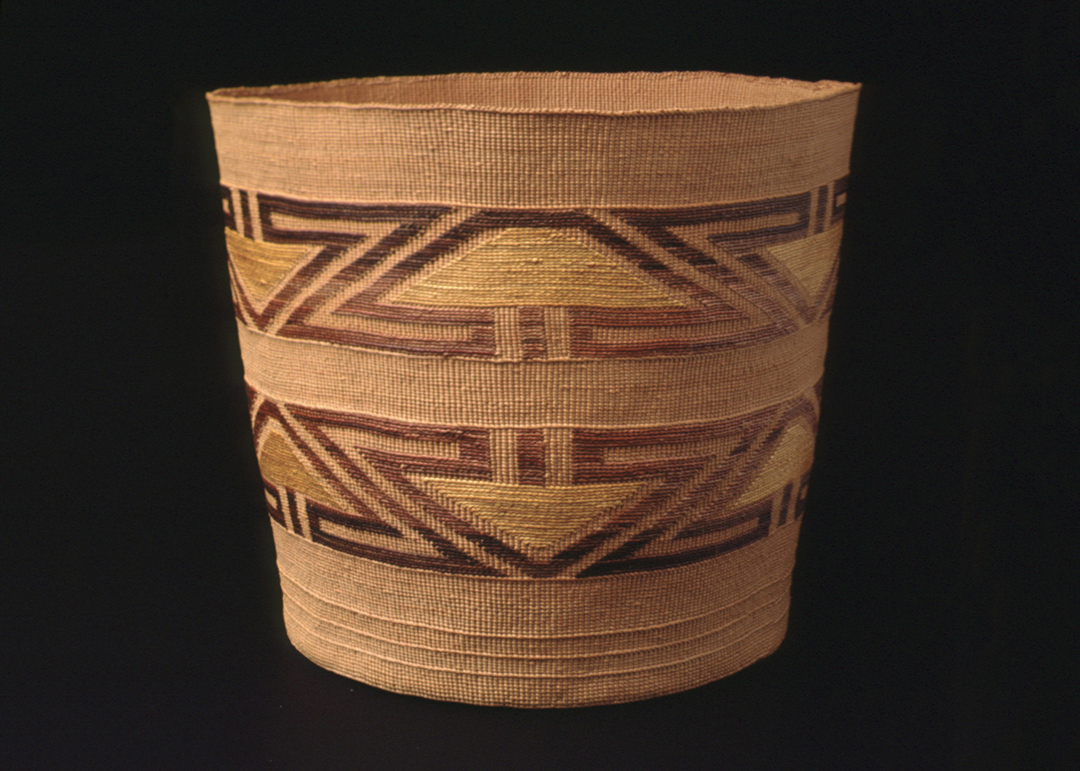Object of the Week: Tlingit Basket

Around this time of year, the cornucopia could very well be the most ubiquitous Western symbol of abundance, evoking a more agrarian past. However, this Tlingit “berrying basket” (kadádzaa yéit)—made by Tlingit women and children for harvesting berries—holds similar cultural (and more practical) significance for the indigenous peoples of the Pacific Northwest, as it would be used to collect special foods for the culmination of potlatch feasts.1
The potlatch ceremony, as practiced by the Tlingit (as well as many other indigenous groups in the Pacific Northwest and Canada2), centers on gift-giving. Potlatches take place for a variety of reasons, ranging from births and deaths to weddings and house building. Often replete with dancing, singing, storytelling, and the distribution of gifts, an important aspect of these lavish celebrations is the communal feast, to which such baskets contribute.
As both a practical and aesthetic object, this berrying basket features a traditional Tlingit embroidery design identified as “head of salmon berry,” a modern motif likely copied from an oil cloth pattern.3 Decorative yellow triangles and trapezoids punctuate the zigzagging black and brown bands. Slightly wider than it is tall, flared baskets such as this would be used to collect berries by knocking them right off the bush.
While the imagery of baskets overflowing with corn, squash, and grapes might appear hackneyed during these autumn months, food plays an undeniably central role in our social gatherings. Whether your get-togethers take years to plan (as is the case with some potlatches!), a few weeks, days, or hours (there is no shame in take-out . . . ), these celebrations with friends and family surely incorporate enough food to fill a berrying basket, many times over.
– Elisabeth Smith, Collections Coordinator